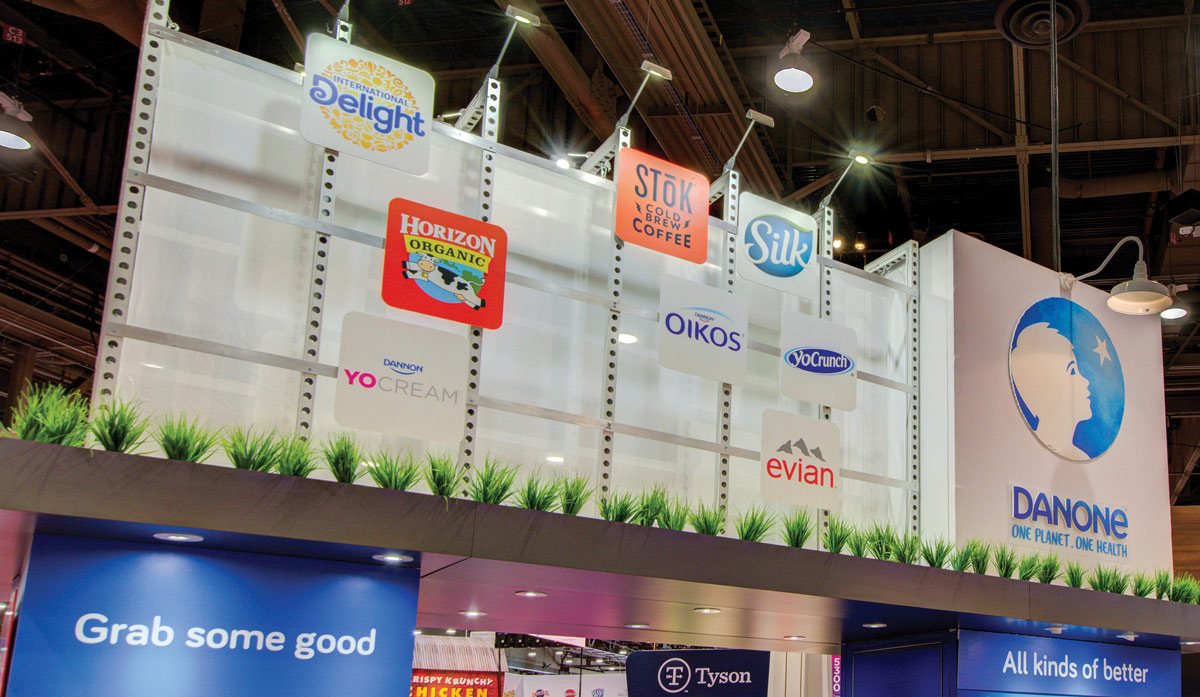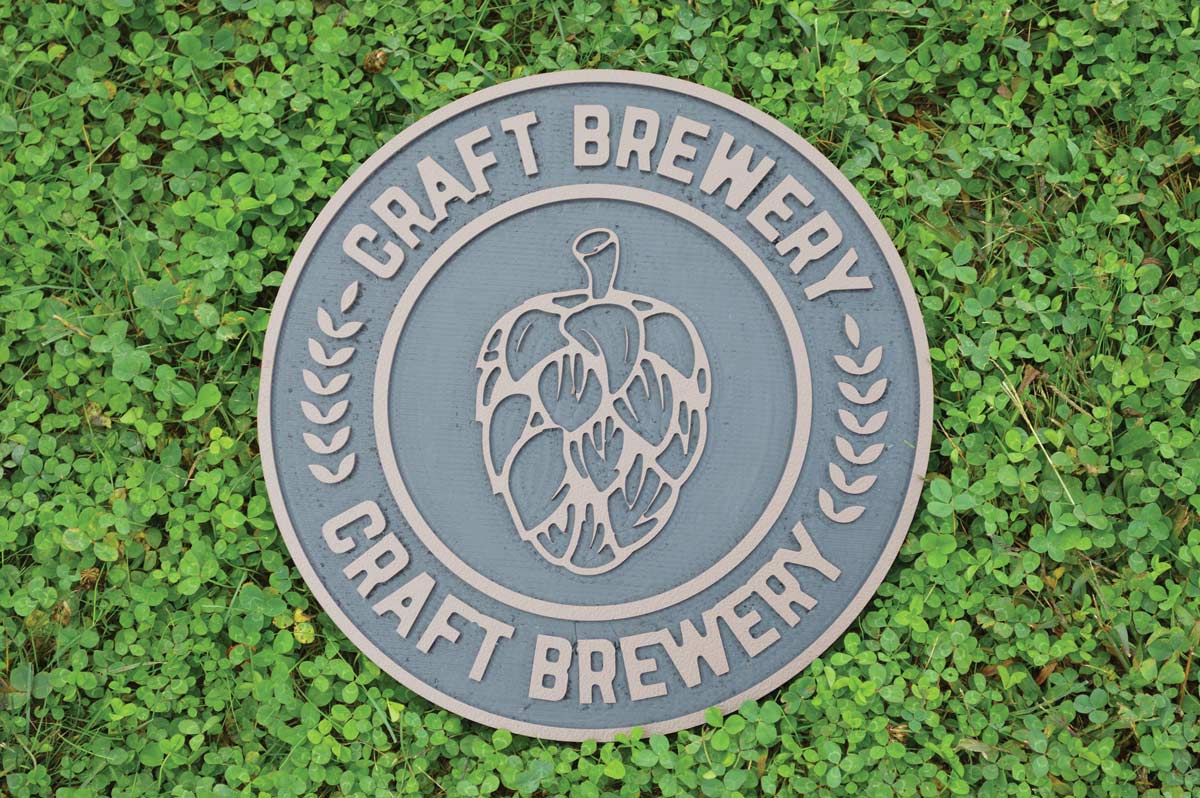SpecialFocus
he signs are everywhere. Take a look around — there is signage wherever you look. When we’re out, we rely on signage to guide us on our journeys, educate us about objects and events new and old and notify us when the items we want are on sale.
Like all forms of mass communication, signage creation has evolved to include new technologies, processes and materials. Performance plastics are widely used in today’s fast-moving world of signage because of their versatility, durability and ability to repurpose the raw or used materials upon end-of-service.
Market data backs up the continued growth of the signage and graphics production industry. A study by Straits Research reported that the global printed signage market size “was valued at US$40.78 billion in 2021 and is expected to reach US$47.8 billion by 2030” with North America cited as the fastest growing market. The report notes that the United States “will likely generate US$11 billion by 2030” and is “the most significant market contributor in the North America region.” (https://straitsresearch.com/report/printed-signage-market)
Some of this growth is a byproduct of the pandemic. Several establishments — particularly in the fast- and fast-casual food service markets — have taken the opportunity to rebrand or refresh their operations, which required new graphics. Other entities such as airports took advantage of the low passenger rates to rebrand and rework their signage. Graphics producers are leveraging these rejuvenation efforts to continue to grow their businesses.
The majority of today’s purveyors of sign production use wide format-digital printing (inkjet) technologies for imaging directly onto a multitude of surfaces including performance plastics. In the sign and graphics industry, these companies are known as print service providers. Traditional fabricators — sign shops — are also users of performance plastics, with a mix of printing, cutting, forming and integration or installation services. These suppliers come in all sizes from independent to enterprise and all of them make use of performance plastics.

Condit used Vycom Celtec® PVC sheets as a base for digital printing, and as cut letters (then painted) for this exhibit display.
Rigid PVC
Rigid polyvinyl chloride (PVC) materials are well-suited for a number of signage applications. PVC is versatile, outdoor-durable and available in a wide range of colors, surface textures and gauges. Print service providers with flatbed inkjet equipment can image directly onto an entire sheet in a matter of minutes. Software to drive the printer can “nest” many different sizes and shapes onto a single sheet to maximize material usage. An operator then places the printed sheet onto a flatbed cutter which cuts the signs to their final sizes and trims away the excess. After a quick quality control check, these fresh signs are ready to be delivered to the customer.
Print service providers can create everyday signage such as retail point-of-purchase displays, trade show signage, store branding, event information, general wayfinding, informational panels and decorative backdrops for museums and exhibits, architectural décor elements, outdoor monument signage, safety signage and more. Rigid PVC is a primary signage material choice for print service providers that outfit large retail chains and big box stores due to its versatility and durability. Select rigid PVC sheets offer a bright white point that is an excellent fit for applications where color reproduction is essential, such as meeting customer brand-color needs. For outdoor use — at a garden or lumber store or gas station, for example — their high UV resistance, durability and impact strength characteristics are critical. PVC sheets can also be textured during the production process to provide dimensional surfaces that mimic wood or other natural finishes.
In addition to printing, this material can be cut to create dimensional logos and letters. Sign shops often use it because it can be painted, stained, varnished and thermoformed. As a base sheet (no decorating or fabricating), it can be used as a receiver base for adhesive-backed vinyl, which is widely used in the exhibit industry. Rigid PVC is an extremely versatile performance plastic for creating signage and graphics.
HDPE
High density polyethylene (HDPE) material is an excellent alternative to wood, metal and other traditional materials and is used in a variety of applications where durability is essential. It offers excellent scratch resistance; resists graffiti; and will not delaminate, chip, rot, swell or splinter. In the sign and graphics market, sign shops often select HDPE materials with a contrasting core color that — when the top layer is routed — becomes visible. HDPE sheets can be easily fabricated using familiar routing and woodworking tools.
It can be used to create dimensional, durable signage for outdoor or indoor applications. It is ideal for signage at marinas, parks, playgrounds and campgrounds; for creating city, town and herald signs; and for signage in neighborhoods or housing developments. While HDPE is not printable (hence its inherent ability to resist graffiti) as a solid sheet, it makes a great base material for creating outdoor signs.

This outdoor-durable sign was created using Vycom Polycarve® material with a contrasting core.
Acrylic
Acrylic sheet material is often used for illuminated, architectural, exhibit and point-of-purchase applications. They can be imaged just as PVC sheets can and are also available in a variety of colors. During the pandemic, acrylic was widely used as a safety barrier in stores and businesses that remained open, and some enterprising marketers used those barriers to promote brands or other messages, via digital-print or adhesive-backed vinyl methods.
Performance plastics complement each other in signage applications.
Veteran Wood (Parsippany, NJ, USA) created a monument sign for a local law firm that requested a sign with the look of wood but was more durable. Veteran Wood used a textured and colored HDPE sheet that resembled wood as a base substrate. The letters were cut on a CNC router from black rigid PVC material that were affixed using standard woodworking tools including adhesive to position the letters, then wood screws that were countersunk into the HDPE.
Condit (Denver, CO, USA) offers design, fabrication and rental exhibit services. Among the various materials used to produce custom trade show exhibits, the company uses rigid PVC and acrylic in a wide variety of applications such as three-dimensional graphics letters and logos, infill panels for its rental wall systems, display cases and decorative finishes. Using a UV flatbed printer, the fabrication team also prints to full four- by eight-foot PVC sheets, as well as adds printed vinyl laminate graphics depending on the project.
Think Patented (Miamisburg, OH, USA) was called upon to create high-end signage for the World Equestrian Center that sought an indoor sign that looked like aged, rustic wood. Because it would be located adjacent to riding facilities where horses regularly clomped through the area, the sign needed to be durable and easy to clean. Think Patented selected a one-inch-thick expanded PVC material with a woodgrain texture that brought depth and authenticity to the image of the aged wood. The face of the sheet was printed using a flatbed printer and, after cutting, the edges were painted. Letters made of another material were fastened and the sign installed.

Vycom Celtec® DigiLite® expanded PVC sheets are ideal for retail and point-of-purchase applications.
In addition to their application benefits, rigid PVC, HDPE and acrylic materials are recyclable. Everyone involved in the sign and graphics industry — including printer manufacturers, material distributors, print service providers and sign shops, fabricators, end-user customers, trade show and event producers — are actively seeking out sustainable solutions in materials or substrates. They’re examining and evaluating their material choices to ensure they are sustainable in several ways: first, in performance and fitness-for-use — selecting the right material for the application; and second, in sustainability — can the material be kept from ending up in a landfill at end of use? A number of print service providers are selecting expanded PVC for signage because of its durability, quality and traceability during the recycling stage.
These materials are being kept from landfills through innovative programs designed to take back and recycle printed and unprinted rigid PVC and acrylic sheets and HDPE materials, as well as scraps and drops from finishing and fabricating. Implementing sustainability practices is a growing strategy that’s necessary to be competitive by helping print service providers, sign shops and fabricators add value to their offerings, especially when their customers are demanding more sustainable solutions. It also enables the signage and graphics industry to show their commitment to sustainability and be confident that usable materials are being diverted from landfills and used in the most responsible way possible.
In a circular economy, plastics will be recycled again and again, eliminating waste and enabling the continual use of resources. The circularity chain is not complete if these materials end up in a landfill or incinerators. Signage, when created using performance plastics, are truly part of this circularity process. A sign of the times, indeed, is seeing the performance plastics industry promoting effective sustainability practices.
Kevin Duffy is the vice president, sales and marketing for Vycom. For more information, contact Vycom at 801 East Corey Street, Scranton, PA 18505-3523 USA; (800) 235-8320, fax (800) 858-9266, info@vycomplastics.com or www.vycomplastics.com.